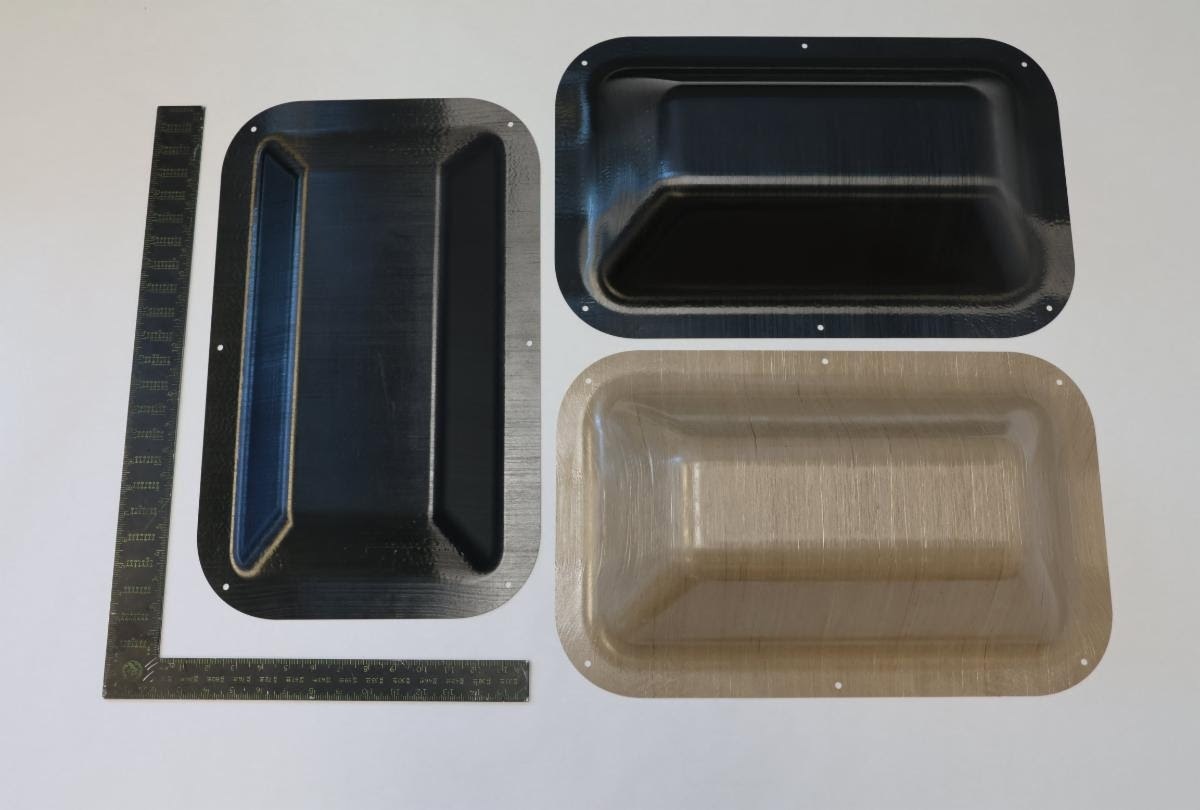Tri-Mack Plastics Manufacturing Corporation, a leading high-performance thermoplastics parts manufacturer, will announce their latest product-development achievement at this month’s CAMX show: very lightweight, high-strength enclosures made from just eight plies of unidirectional carbon-fiber reinforced thermoplastic composite (TPC) tape and only forty thousandths of an inch thick (.040”).
 Tri-Mack’s lightweight TPC Enclosures can be produced in a range of materials and sizes to best meet end-use requirements. Image Credit: Tri-Mack Plastics Manufacturing Corporation
Tri-Mack’s lightweight TPC Enclosures can be produced in a range of materials and sizes to best meet end-use requirements. Image Credit: Tri-Mack Plastics Manufacturing Corporation
The new enclosures demonstrate Tri-Mack’s expertise in the production of large, thin covers with deep draws using unidirectional tape. Visitors to the Tri-Mack booth (J61) at CAMX (October 17-20, Anaheim, CA) will be able to view a range of cover sizes and materials, made using Tri-Mack’s proven production process: automated tape laying, consolidation and stamp forming. Tri-Mack’s thermoplastic composite process produces parts in minutes, rather than the hours typically required for thermosets.
Rhode Island-based Tri-Mack has been developing proprietary methodologies for the automated layup and molding of lightweight thermoplastic composites for over a decade. “We see these new TPC covers meeting rising demand for strong, lightweight enclosures that can shield functional components in aircraft, drones and a variety of other industrial uses,” says Tom Kneath, Vice President for Sales and Marketing. “Where strength and durability are priorities in addition to the lightest weight, continuous-fiber TPCs are the material of choice. It is less brittle than thermosets, delivers ten times the strength of injection-molded parts and, with our enclosure, provides a 30% weight reduction versus 6061 aluminum.”
The new enclosures are not limited to carbon fiber; they can be produced using glass fiber, and with different base resins as well, including PAEK, PEEK and PEI, providing a variety of customizable properties and solutions.
Another benefit of the new enclosure’s manufacturing process is that it allows for added functionality, creating “smart composites” by embedding EMI shielding, or adding localized reinforcement through tailored layups. “We can add electrically conductive layers into our process to enable EMI shielding performance at a fraction of the weight of metal,” says Sales Engineer Max McCabe. “This also eliminates the plating and painting process steps of typical EMI solutions used on composite parts.” Electrical conductivity and shielding effectiveness can be tailored to end-use using a wide variety of durable composite materials, McCabe notes, further broadening potential applications across aerospace, unmanned air vehicles (UAVs), undersea applications, and electric vehicles (EVs).
Tri-Mack’s Process Engineering Manager Ben Lamm, leader of the new enclosure project, says that it was a definite technical challenge to form the large, deep covers out of TPC. “With unidirectional materials you’re stacking plies that are oriented in different directions throughout the part,” he says. “Making complex shapes this way requires individual plies to slip against each other as you are forming. Getting them to move the way you want to produce a consistent, wrinkle-free part requires strategic layup and tool design, as well as subtleties in material handling during processing.”
This level of manufacturing expertise comes naturally to the 48-year-old company. “Tri-Mack has been working in the lightweight composites space for decades and has comprehensive, in-house capabilities,” says Kneath. “We make injection-molded housings that require EMI shielding and thin-wall TPC enclosures that replace metal using assembled pieces and fasteners. Our goal was to build this functionality into a single part and show the industry how lightweighting can improve product performance through fuel efficiency, battery range, or increased payload.”